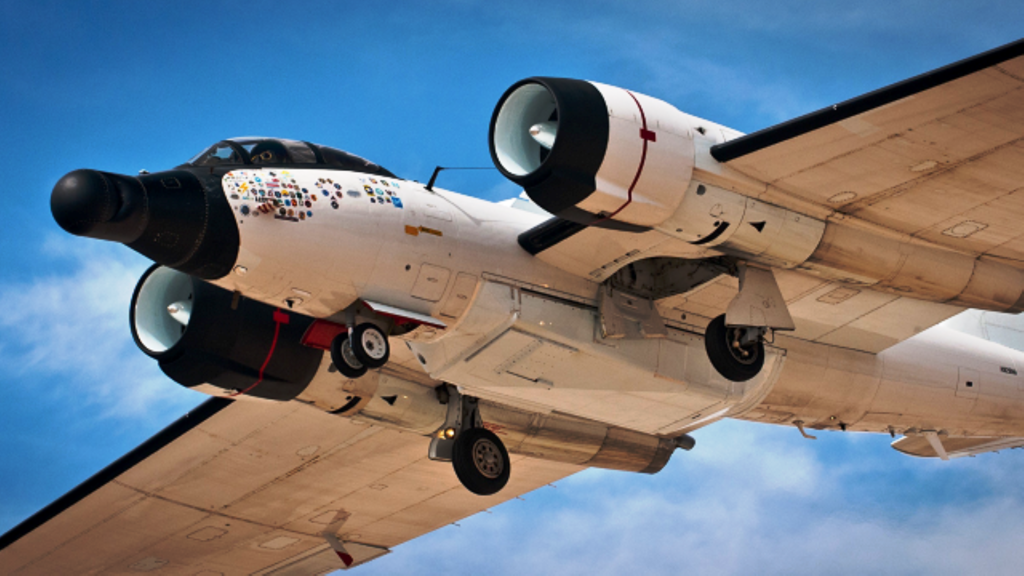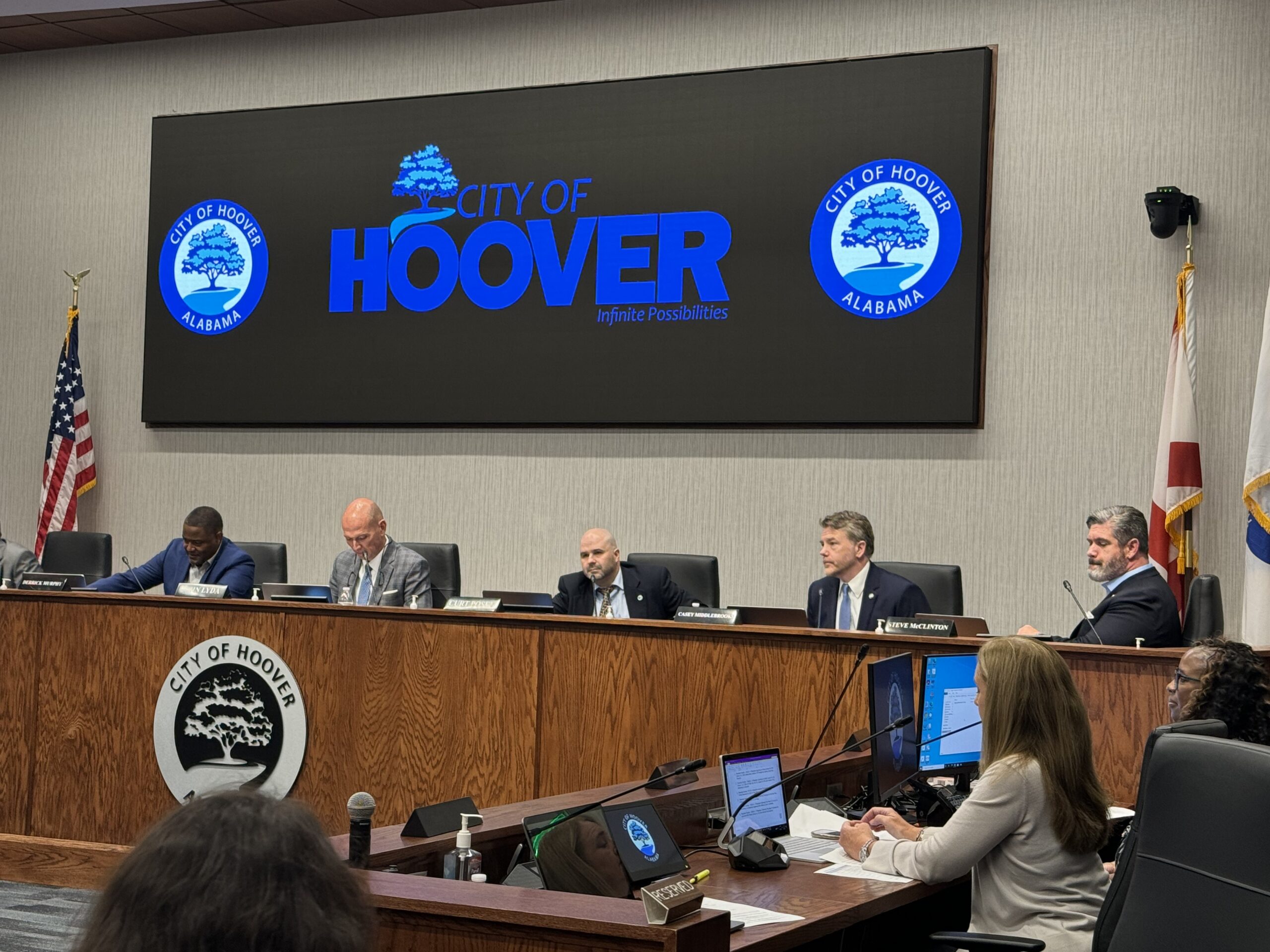A high-definition imaging system developed by Southern Research and deployed on NASA aircraft flying nearly 10 miles above Earth will give scientists a unique look at the sun’s corona during a rare total eclipse taking place over the United States in August.
As a bonus, Southern Research’s Airborne Imaging and Recording System (AIRS) will provide highly detailed observations of Mercury’s surface and could uncover the first solid evidence of the existence of Vulcanoids, a belt of asteroids believed to be circling the sun.

To capture this data, Southern Research and its AIRS/DyNAMITE technology are supporting the Southwest Research Institute (SwRI), which won a NASA contract to carry out the mission during the Aug. 21 eclipse.
AIRS/DyNAMITE turrets will be mounted on two NASA WB-57 research aircraft, which will fly at 50,000 feet and collect high-resolution video and infrared data throughout the first total solar eclipse occurring over the length of the entire continental U.S. in 99 years.
“NASA is providing the WB-57 aircraft, Southern Research is providing the unique onboard sensors and Southwest Research Institute is conducting the science,” said Johanna Lewis, director of the Program Management Office in SR’s Engineering Division.
“Southern Research will be handling the data collection, and we will be making sure that Southwest Research Institute is getting the best data that we can provide on Mercury and the sun,” she added.
Unprecedented observations
The total eclipse will unfold over 14 states, from Oregon to South Carolina, as the moon’s shadow completely blocks the sun, turning day into night for a few minutes. For scientists, the event is a chance to get a close look at the otherwise hidden solar corona, as well as planets and stars normally obscured by the sun’s blinding light.
SwRI says the mission will provide the clearest images ever of the sun’s outer atmosphere and the first thermal images of surface temperature variations on Mercury.
“This airborne platform provides us with higher-quality, higher-speed images than are achievable from current or previous space-borne instruments,” said Amir Caspi, Ph.D., principal investigator of the project and a senior research scientist in SwRI’s Boulder, Colorado, office.
“We hope to better understand what causes the corona and why it’s so hot. It’s millions of degrees Celsius, hundreds of times hotter than the visible surface below,” he added. “The corona is the source of electromagnetic storms here at Earth, which can damage satellites, cause power grid blackouts and disrupt communication and GPS signals, so it’s important to better understand it.”
‘Eyes in the sky’
Lewis and John Wiseman, Ph.D., a senior project leader in Southern Research’s Engineering Division, traveled to NASA’s Johnson Space Center in Houston this month for test flights of one of the WB-57 aircraft with an AIRS/DyNAMITE instrument modified for the mission.

“The system provides a means of tracking events you might not be able to get elsewhere, with simultaneous mid-wave infrared and visible light data,” said Wiseman, one of the instrument’s inventors. “It’s configurable, and we have had a number of payloads in it, so it’s very versatile.”
Southern Research developed the technology in partnership with NASA, which was looking for a system to capture HD video of the July 26, 2005, launch of the Space Shuttle’s “Return to Flight” mission after the Columbia mishap. Acting as “eyes in the sky” for NASA, the system, from a distance of 20 miles, captured full-motion video of the shuttle’s liftoff and tracked it to 146,000 feet.
“It was developed as an experiment, and it was supposed to have about five to 10 flights,” Wiseman said.
Since then, the high-altitude video system has been used to monitor critical rocket launches, to collect data for science missions and to assist the Department of Defense on security missions. In the past six years alone, the AIRS/DyNAMITE technology has flown on almost 500 flights.
Extended view of eclipse
On Aug. 21, the twin WB-57 aircraft flying in the stratosphere over Carbondale, Illinois, will tag-team the total eclipse, gathering exceptionally accurate measurements of the solar corona to better understand how energy moves throughout the sun’s atmosphere, according to NASA.
From a vantage point high above the clouds and Earth’s weather systems, the AIRS/DyNAMITE-equipped planes will get a clear view of the eclipse and collect data during totality for about 8 minutes. That’s far longer than the 2 minutes and 40 seconds available to ground stations monitoring the event.
In addition, the instruments will be in position to make unprecedented observations of Mercury’s surface in infrared light, which can be otherwise hindered by radiation from the sun. Scientists hope these measurements will give new information about how Mercury’s surface temperature changes as its day turns to night, shedding light on its surface composition, NASA says.
“Because Mercury is so close to the sun, it’s very difficult to perform direct observations. When the moon is going into eclipse over the sun, we will have a rare opportunity to collect Mercury infrared data,” Lewis said.
There’s even more to this mission. While the sun’s bright light is blocked, AIRS’ HD cameras will search the skies for evidence of vulcanoids, a hypothetical band of asteroids traveling around the sun in Mercury’s atmosphere. That’s important because vulcanoids could provide insights about the creation of the planets and the solar system’s earliest period.
“Most people have never heard of vulcanoids before. This will be a unique opportunity for them to look for these things that scientists theorize are there, but nobody has ever proven,” Lewis said. “If we provided the instrument that proves they were there, that would be a major accomplishment.”
Flying with the WB-57
Southern Research will play another important role in the eclipse mission. A Houston-based SR communications engineer, Donald Darrow, will serve as the special equipment operator in the back seat of one of the WB-57 aircraft, operating the AIRS/DyNAMITE instrument during the flight.
Lewis said a Southern Research team on the ground at NASA’s Johnson Space Center will assist Darrow on the mission.
“We can be another set of eyes, seeing what he’s seeing. If we see there are any adjustments he needs to make – open the camera’s iris more, sharpen the focus – we can call that up to him,” she said. “We’ll be doing the same for the other back-seater when it’s his turn.”
To make sure the scientists at SwRI’s Colorado labs get the data they need, the AIRS/DyNAMITE equipment flying on the mission has received modifications including software upgrades and a filter to protect the visible light camera. In addition, new video recorders that capture a full range of data have been added.
“This is one of the most exciting missions for this technology,” Wiseman said.
Republished with permission of Alabama NewsCenter.
Related
Share via:














